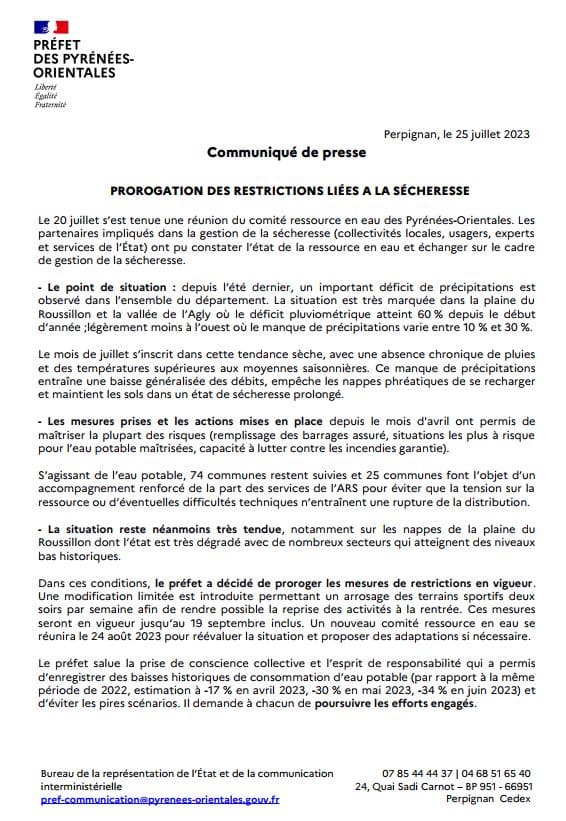Update on water restrictions
Latest info: DECEMBER
This update is based on the press release sent by the Préfet des Pyrénées-Orientales on 1st December 2023, and makes very slight changes to our article in July.
The Préfet has decided to extend the current measures until at 31st January 2024, after which a meeting will be held to reevaluate the situation and suggest modifications as appropriate.
CHANGES
It is no longer prohibited to water trees and shrubs during the day.
Latest info: JULY
Since last summer, a lack of precipitation has been observed across the whole department. The situation is particularly bad on the Roussillon plain and in the Agly valley, where the rainfall deficit has reached 60% since the start of the year.
July, as we all know, has been hot and dry, with a chronic absence of rain and temperatures above the seasonal average, which means the water table has not had chance to refill and the grounds remain critically dry.
Measures implemented in May have allowed the département to respond to fires and maintain drinking water provision. In fact, thanks to collective efforts, this June we have consumed 34% less drinking water than in June 2022.
Looking forward
In terms of drinking water, 74 communes remain under close observation with 25 receiving extra support from the Agence Rérional de Santé (local health authority).
Throughout the department, the situation remains tense, with certain areas showing the lowest water table levels since records began.
The Préfet has therefore decided to extend the current measures until at least 19th September. A new committee will be held on 24th August to reevaluate the situation and suggest modifications as appropriate.
One change that is already in place: sports grounds can water their grass two evenings per week in order to facilitate the resumption of activities with the new school year.
Remind yourself of the restrictions here.


Bonjour,
Il existe chez nous des technologies efficientes déjà utilisées dans plus pays, permettant d’économiser jusqu’à 80% de l’eau d’irrigation nécessaire aux végétaux ( espaces verts, golfs, paysagisme, agriculture, horticulture ect…) .